By Jimmy Steinfeldt
La Quinta, California (The Hollywood Times) 01/23/2023
Ernie Cefalu (born 1945) is a contemporary artist and Senior Creative Director, currently working out of Los Angeles, CA. He is known for designing art for music albums.[1]

Ernie Cefalu artwork
Cefalu attended the California College of Arts and Crafts (now California College of the Arts) and graduated in 1969 with honors. Soon after, Cefalu started his career on Madison Avenue at Carolini Advertising, where his first assignment was to create the campaign and graphics for the International Paper Company’s 1970 national sales meeting. His solution took the form of an elaborate, award-winning off-Broadway musical production, Dolls Alive. In the early part of 1970 Cefalu became an Art Director at Norman Levit Advertising where he created the Jesus Christ Superstar album and Angels[2] in an agency shootout with the Decca Records account as the prize. (Wikipedia)
The Hollywood Times had the opportunity to interview Ernie Cefalu. Enjoy the conversation here:
Jimmy Steinfeldt: How did you start in the Arts?
Ernie Cefalu: When I was a kid I used to wait for the Sunday papers (the funny pages) so I could draw Mickey Mouse. I always liked art but I didn’t think of it as a profession. During high school back in the 60s I was dragging the main in San Jose like in American Graffiti. After that summer my friends all had jobs and all I knew how to do was drag the main. I decided I was going to be a carpenter like my dad so I joined the union and after three months of doing that I knew that wasn’t for me. It was just too hard. I told my parents I wanted to go to art school. I had done some stuff in Jr. High and high school. I was the best there but in art school everyone is great. I put together a portfolio and applied to California School of Arts and Crafts in Oakland and got accepted. After four years I got pretty good in my major which was advertising. I had always loved music and during college I did art for the Jelly Roll Press. They had a press and a die cutting machine in the back of a diesel trailer and they moved it from location to location and as art students we could submit art to them and they would make posters. This was during the psychedelic era and the protest movement. Me and other artists designed everything you can think of related to Haight Ashbury, and the Revolution. Stanley Mouse who did all the Grateful Dead stuff went to school with me. I stayed in college for an extra year and I taught there too.
I decided I wanted to go to New York. I was already freelancing in San Francisco with companies like Walter Landers, a packing firm which was located on a boat in the harbor. After rocking back and forth designing Dixie cups and stuff I realized to really go places in advertising I needed to be in New York. I went to New York with a great portfolio featuring my college and freelance work. When I got to New York I thought I was a big star and I was going to bring the advertising world to its knees. What I didn’t realize was in New York everyone is great. It’s not just college or regional advertising people it’s the best in the world. I wanted to work on Madison Avenue but after a few weeks I couldn’t ‘catch a cold’ I wasn’t used to being beaten down with rejection.
I called Bonnie who I was living with in Oakland and told her New York wasn’t working out and that I was coming back to Oakland. She said if I came back she wouldn’t be there. I asked “What do you mean?” She said she didn’t want to be with someone who was going to run away any time there was adversity. I couldn’t believe what she had to say. I did have one more interview coming up in four days and I went to it and got the job! I never looked back. Bonnie came out to New York and we spent about three years there. I worked on Madison Avenue with a couple of agencies. I did a presentation called Dolls Alive for a five hundred person national sales meeting with the National Paper Company. It was like a Broadway show with dancers and we hired a songwriter to write ten songs about paper. We even created a take away piece that was a hexagon album cover. Inside was a record and the label had a pair of lips on it.
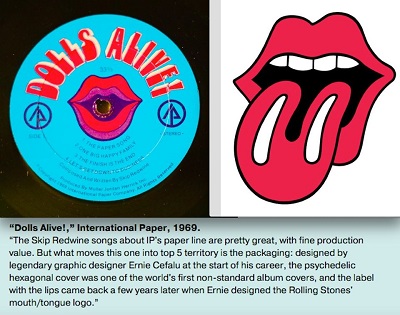
The Dolls Alive piece helped me get a job at a bigger agency doing ads for Omega watches, Ralston Purina, New York Life Insurance, etc. At first this agency didn’t seem right for me. The owner Norman Levitt had been a Marine. He would run a string from desk to desk to make sure every desk was in line. The head director was a guy who drank five cups of coffee and smoked ten packs of cigarettes a day so he could handle the job of getting all the ads completed for each days deadlines. He was headed for a heart attack. I watched all this going on and thought there’s no way I want to work here. When I met with Mr. Levitt after he saw my work including the Dolls Alive album he leaned back in his chair put his glasses up on his shaved head and said “I like your work, how much are you looking for?” Well, I absolutely didn’t want to work there so I asked for $30,000 more than I was getting at the previous agency thinking I’ll never get this job. He said that’s a bit more than we want to pay. I acted like I was bummed out. I said my wife is here in New York and we’ve got rent and I can’t take less. When I left his office I was so happy I didn’t get the job that I didn’t take the subway home. I treated myself to a cab from Manhattan to Brooklyn. During the cab ride I’m trying to figure out what am I going to tell my wife about not getting the job. I walk in the front door of our apartment and my wife said Norman Levitt is on the phone for you. Norman said he had talked to his partner and they decided to hire me.
Good fortune came my way because the agency almost had bad fortune. They were about to lose the Decca Records account because two art directors at the agency were leaving to start their own agency. They had befriended Bill Levy the creative director at Decca. My boss Mr. Levitt had the account for many years and he had a friend who was higher up than the creative director at Decca. It was agreed that my agency would do a shoot-out against the new agency that had just been formed. I didn’t know what my job was going to be at that point, was I just going to be another artist working on very common corporate like ads? When I arrived at work the next day I’m briefed fully on the Decca shoot-out against the other agency.
The project is for something called Jesus Christ Superstar. None of us had ever heard of the two guys who put it together named Tim Rice and Andrew Lloyd Weber. They’ve got this very controversial rock opera and that’s the project. I asked the Decca art director when is our competition going to make their presentation? He said next Monday. I said I want to make our presentation this Friday. I saw the look on Mr. Levitt’s face which was not good. I was giving myself four days to come up with a presentation from scratch. During the cab ride with my boss after the meeting my boss was furious. He said “What’s wrong with you? Don’t you understand how important this is?” In the next few days I came up with about five ideas including the angels. I actually liked some of my other ideas better. Ideas that were more about the Revolution. Our agency decided to present the angels and the client loved it. The other agency had a pretty weak presentation.
I was at this agency for about four more months till the end for 1970. I did a lot of stuff for Decca: 45 record covers, posters, buttons, etc. I got a call from the headhunter who had helped me get several jobs. He said he had another job for me. I said I’m not moving, I’ve been here four months and I’m happy. I’m a hero for saving the Decca account. He said there is a place that just does album covers. They know about you and want to meet you. I said I’m not moving and I hung up the phone. I got home and found out the headhunter had talked to my wife telling her she had to convince me to go to the meeting for this great opportunity. Even when she told me I said no way. I’m not going to get the reputation of going from one place to another. Being “Mr. Right Now” instead of “Mr. Right.” My wife and the headhunter convinced me to just go to the interview. I was however certain I would not to take the job even if Jesus Christ showed up and offered it. I showed up and met the owner Craig Braun. He had a great little studio in a brown stone between Madison and Park on 53rd St. Everything else around it was skyscrapers. This agency was all young people unlike my agency which was lots of older people. They were going to give me a separate space from all the other people who were there. Craig of course loved the work I did on Jesus Christ Superstar but wanted to see more since they specialized in album covers.
I had not done anything else in album covers accept the promotional piece I had done with the hexagon cover. Craig loved it partly because it was done on board instead of a paper wrapped album which was more common. Album covers printed on board were becoming hip due in large part to the Velvet Underground album featuring a Banana. Craig thought I was ahead of my time. He then eventually pulled out the sleeve and saw the lips. He then told me about how he and Marshall Chess grew up together in Chicago. When Marshall’s dad sold Chess his dad became president of Atlantic Records and put Marshall in charge of managing the Rolling Stones. Marshall said to Craig Braun he needed a logo for the Stones. Talk about being in the right place at the right time! It’s all timing. Everything is timing. There’s a rhythm to everything. Craig’s head art director was very ill. Craig said if you go upstairs to the art department and put a tongue outside these lips I think I can sell it to the Stones.
I went upstairs, did a sketch for him, put some teeth in there and a tongue. It took me 15-20 minutes. I showed it to him and he said “that’s it, wait here I’ll be right back” He takes a cab to Andy Warhol‘s factory in lower Manhattan where Marshall was. Shows him the sketch and Marshall says it’s great. Craig comes back and says “You just did the logo for the Stones. Within two weeks he hired me and gave me $200. After doing the International Paper thing I thought maybe there is a career here. Forget about Madison Avenue. There may be something here I really love. I really loved the movement of the 60s. I spent a lot of time in Haight Ashbury and stayed in communes. Many times we’d sit outside the Jefferson Airplane/Grunt Records ginger-bread house and get high and party out in front. Later we’d get high with the band in the house. I was freelance with Craig for a few weeks before he hired me. I did the Grand Funk Railroad cover and other things. The record industry was changing. From east coast to west coast (both offices and the actual music.) Changes too from paper packaging to board. RCA, Warner Bros, and later Casablanca, and Motown were now all in L.A. It became the music Mecca. Craig decided he wanted a satellite design firm in L.A. I was sent to L.A. to put together an art department and then I would come back to NY to be the art director there. Now I was a New Yorker. I loved it. It went 24 hours a day. It never shut down.

I used to read Cashbox, Record World, and Billboard magazines cover to cover. In Billboard they had a section Bubbling Under and you could tell who was in the studio. Two acts I loved were Cheech & Chong, and Alice Cooper. They were both in the studio doing new albums. Alice’s was called School’s Out and there was no title yet for Cheech & Chong. I decided to pitch both acts even before I moved permanently to L.A. I created an album cover for each before I even met them. I was rolling a joint and I was thinking what am I going to do for Cheech & Chong and I thought Bambu cigarette papers. I didn’t tell anybody I was working with about these mock ups. I finally told my associate with our ad firm about these two covers after I had basically perfected them. He called Lou Adler on the A&M lot and said “I’m here in L.A with the creative director who did the Stones logo and he has an idea for a package for Cheech & Chong, do you have fifteen minutes to look at it.” Lou agreed to see us. Then my associate calls Shep Gordon at Alive which is Alice Coopers manager and makes the same pitch. Shep says “Have you ever seen Alice Cooper?” we said no and Shep says come to the Palladium he’s headlining and the opening band is Canned Heat.
Alice Cooper’s performance was his take on West Side Story, the Sharks and the Jets. Turns out there’s a heckler in the audience. Finally Alice says to the heckler “Why don’t you come up here?” The guy comes up on stage, Alice pulls out a switch blade and stabs the guy and the guy falls on the ground and the lights go out. People can’t believe it. It’s pitch dark you can’t see anything. Lights come back on and Alice is being led up to the judge and Alice is sentenced to death. Lights go out again. Lights come up and Alice is in a straight-jacket being walked up to the hangman’s noose. The bottom drops and he’s hanging and dangling. People are freaking out, women are fainting and the lights go out for like five minutes. Shep was a great promoter and the ads said “if you have a weak heart don’t come to this concert.” Anyway when the lights came on again there was nobody on stage and the concert was over. So everyone goes home and turns on the radio to hear what happened. The disk jockeys are saying something went wrong at the Alice Cooper concert tonight and Alice hung himself. This story goes on all through the weekend. Alice is dead, he hung himself. On Monday we go to Shep’s office at Alive in Hollywood and there’s Alice drinking a beer. From that moment on I became part of the Alive family.
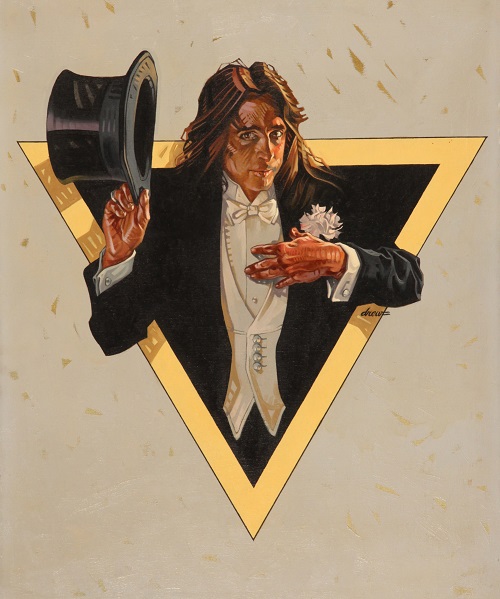
It became time for me to move on from working with Craig. I was now being courted by AGI which was moving towards getting into the album cover business. Meanwhile my associate Tony and I had been living together in Hollywood while working for Craig. I’d fly up on weekends to Oakland to be with my wife but Tony was thinking about moving back to NY where he grew up and had so many friends and business connections. When Tony and I first moved into the Hollywood apartment we were like oil and water, total friction. However now after several months we really bonded. We worked well together and he was the greatest salesman ever. Around this time I had gotten some Mescaline and we decided to take a Mescaline trip together. On this trip we agreed that no matter who we worked for in the future we’d always be on the outside looking in. They would determine what you can do and what you can say. For the big business decisions the doors would be shut to us. Our bosses and their clients would make the decisions. We grew tired of this. Tony and I started our own company Pacific Eye and Ear. Pacific for the west coast, eye for the visual, ear for the music. Our tag line was “Our mothers always wanted us to be doctors.” We thought it was clever especially on a Mescaline trip.
The next week we met with our boss Craig at the Jolly Roger restaurant on Sunset. I told him I was leaving and Tony had quit. On January 1, 1972 we started our new business. Meanwhile Craig gave credit for both the Cheech & Chong and Alice Cooper albums to other people at his agency. That was disappointing but Shep Gordon called me and said he couldn’t find the artwork for the album and I helped him re-create it and I didn’t charge him. I said “Shep I want to work for you and Alice.” From that day on I did all of Alice’s projects. Shep and Alice put me in touch with many bands and all their friends in the music business. Burton Cummings, who I loved, called me out of the clear blue and said he saw the work I did for Alice and wanted to hire us.
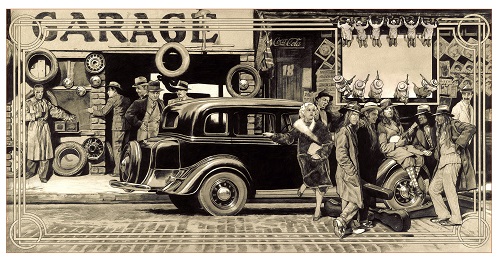
After Tony and I did 189 album covers we split up. It wasn’t a good split but it was time. You know when it’s time. I got another partner and that lasted six years. Several partners later I decided I’ll just do this on my own and it’s been great. For the last eleven years I’ve been doing a lot of corporate work: Ocean Spray, Rockwell International, Nestle (for 30 years) including their Chicago Marathon event.

That reminds me of a funny story. I attended an important meeting with the Nestle top brass and one of the people asked me what other work I’ve done. I said I’ve designed a lot of album covers including for the Rolling Stones. They said “Oh you mean that satanic group!” then I said well I did work for Alice Cooper. “Oh you mean that guy who tears babies apart!” So that’s the last time I mentioned album cover work at such meetings. I’ve worked on the Polar watch. It measures peoples heart beats. I worked on NASCAR projects through an association with Kmart.
The internet has been really good for me. It allows people worldwide who have seen my famous designs to figure out I’m the guy who did it. I started doing an hour show each week for a few years telling how I designed the album covers. I’ve also been selling some of my work: Billion Dollar Babies, Toys in the Attic, and many others. Some of my avid collectors each have over 100 of my artworks. I also have been collecting original artwork of illustrators I admire like Drew Struzan who changed the movie poster industry. We’ve been working on a book of his work.
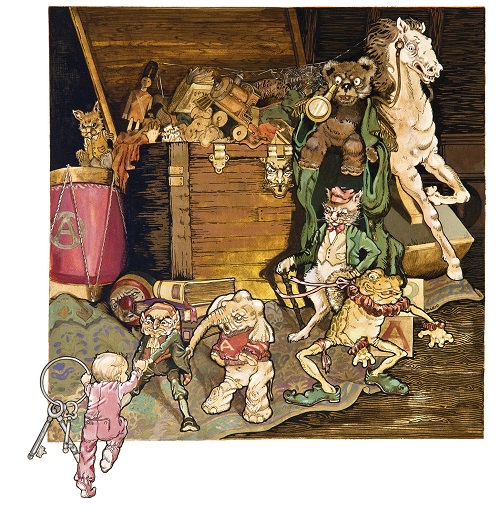
I’ve found that it’s really important to do a diversity of work. Both the very creative album cover type work and then the more corporate type work. This change back and forth allows an artist to remain creative.

JS: Do you have a favorite medium in which you like to create?
EC: I’m more of a graphic designer. I do lettering, Pen and Ink, sketches. My main thing is concept and lettering. I thought I was an illustrator and I’m very proud of what I did on Jesus Christ Superstar but I was surrounded during my career by the world’s best illustrators so I became the creative guy that came up with the concept and then also did the lettering in pen and ink.
JS: How do you come up with concepts?
EC: early on I would do a lot of sketches. The shot gun method. This would take me days. Get a grouping of sketches and see if it works. Now after all these years, fifty years, it just comes out. Now I just do one or two ideas. If an idea takes me more than one hour I’d be shocked. I can’t explain it but I start thinking about it and it just pours out.
JS: What artists influenced you?
EC: Peter Max. Most everything I do is symmetrical. There’s a comfort I find in that. The first sketches I did for the Stones were head-on straight not angled like we finally did. I forced myself to put the tongue at an angle. There is also the John Pasche version. They used my version on the merchandise and tour stuff and they used his on the album. I love John’s version. I’ll even say I like his more than mine. It’s like a Jesture drawing instead of a portrait. It shows movement, action. Mick Jagger doesn’t just stand at the microphone and sing, he’s all over the stage as are Keith and Ronnie. I also love the work of Saul Bass from Push Pin studio. I even interviewed for him for a job when I first came to L.A. I thought he was god and he was going to hire me but we started Pacific Eye and Ear.
Pacific Eye and Ear became its own Mecca. A Mecca for artists because everyone wanted to do album covers. Our company was like a band. We started in a garage! We started with the two of use like a piano player and a guitar player. Then it was like we need a singer, and a drummer and a bass player. We had some of the best artists in the whole world. The crazier you were on design the more the bands loved it. Alice Cooper’s greatest hits was the St. Valentine’s Day Massacre. We did the incredible art work and then Warner Bros got worried they’d get sued for using likenesses of living celebrities so we had to replace any of the living celebrities with dead celebrities. An exception to this was Groucho Marx because Groucho and Alice were good friends. Alice bought Groucho’s house on Mulholland Dr. We became the ad agency for Little David records: Kenny Rankin, Flip Wilson, Modern Jazz Quartet, George Carlin, Burns and Shriver (The Watergate Comedy Hour) The Committee, and others.
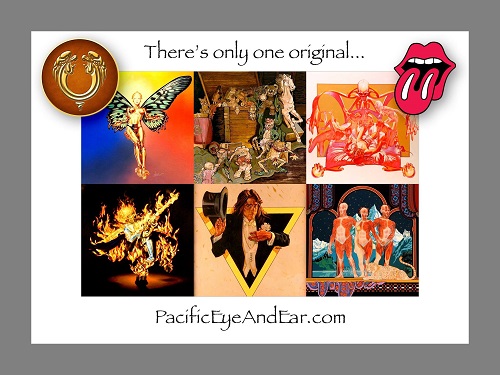
Each guy I worked with had their specialty. One guy was an airbrush guy, another a cartoonist, another a calligrapher, another a painter. They were all able to work together because I was the link that connected them.
Ernie can be reached at: https://pacificeyeandear.com/
ernie@hornbookink.com